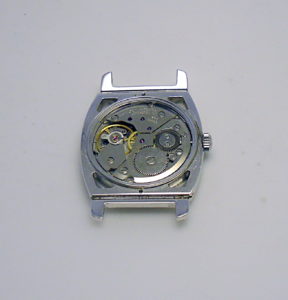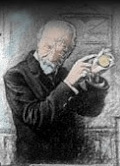In 1928, New York Yankees owner Jacob Ruppert faced a dilemma. He had to select an appropriate award for his world champion 1928 team. Mr. Ruppert decided on a prototype watch from Hamilton. He scheduled the award presentation for the opening day of the new season, April 18, 1929.
Hamilton presented a white solid gold Piping Rock watch to each member of the New York team. The company only made the Piping Rock in yellow gold and never produced another white gold model again.
Ruppert only ordered 31 watches, but Hamilton produced 35 and gave one to Ruppert and manager Ed Barrow.

|

|
|
The Hamilton Piping Rock went over well with the public. In the 1920’s Americans embraced nationalist pride. The US intervention in World War I pushed the Allies to victory. US brands flourished, and Hamilton represented the pinnacle of the American craftsmanship.
In July 1928 Hamilton issued the yellow gold Piping Rock with the choice of two different movements: the 19 jewel limited edition 979 caliber and the 17 jewel 987. In 1948 and 1953 Hamilton offered 17 jewels 747 movements. Both models also had a larger and angular case than the 1928 model.
Almost sixty years after the 1929 Yankee award presentation, Hamilton Watch Company faced a dilemma. Management chose to leave the high volume catalog business and follow demand for faithful classic replicas of their most famous models from the decades of 1920, ’30, ’40 and ’50.
The company needed designs to expand and maintain the momentum of its wearable classic product line introduced by the Khaki in 1981. Hamilton promised new vintage designed watches to:
Bloomingdale’s, Bullock’s, Filene’s, Lord & Taylor, Macy’s, Nordstrom, Saks Fifth Avenue, Strawbridge & Clothier, Wanamaker’s, Woodward & Lothrop, L.L. Bean, Tradema Italy, MBI and the merchandise services division of American Express.
In 1982, Hamilton released a fourth model of the iconic Boulton. The company only produced 3000 units because their case manufacturer closed. Bloomingdale’s and Neiman Marcus participated in the marketing effort.
In 1987, Hamilton only had the Khaki, repurposed military, watch available.
Hamilton needed a superhero.
 |
| Super Hero Needed |
Hans Scholl, the product development V.P. from Omega came to the rescue. He recruited several senior employees to join his staff. They selected designs from the Hamilton vault, catalogs, and collections. They chose the Piping Rock, Cabot, Emerson, and Wilshire.
You can find current information of Mr. Hans Scholl at his Almeda Time Products LLC at this link.
Mr. Scholl chose the Piping Rock as the first offering in 1987.
The team found one Piping Rock from which to produce their replica. They borrowed it from the Baseball Hall of Fame. Scholls group
made drawings took photographs, and returned the watch to Cooperstown.
Scholls disclosed his penchant for perfection, but finding suppliers became daunting. The original case manufacturer, Schwab & Wuischpard, failed. Scholls found a replacement case manufacturer in Switzerland.
The Yankee Watch came with a 17-jewel FHF 138.001 manual, hand wound movement similar to the original but made in Switzerland. (Hamilton also offered the Yankee Piping Rock with the jeweled ETA 580.001 quartz movement.)
Specifications for the FHF 138.001:
Manual wind
Sub-second
Outside Diameter: 8.75 Ligne or 19.4 mm
Movement is 3.20 mm thick
Dial is white
Required watch hands: hour 1.10, minute 0.6 mm, and second .18 mm
17 jewels
Specifications for the Hamilton 987:
Manual wind
Sub-second
Outside diameter 11¼ Ligne (US: 6/0) or 24.8mm
Movement is 4.15 mm thick
Required watch hands: hour 1.40, minute 0.80, and second .20 mm
17 jewels
Once the Piping Rock went into production Hamilton released three more exact replicas: the Cabot, Emerson, Wilshire. Later, the company released five additional classic watches with minor alterations from the originals. They included the Ardmore, Benton, Carlisle, Contour, and Ventura. Each of the later models came with a 15 jewel, ETA 980.163 quartz movement.
Copyright 2006-2017 | All Rights Reserved


